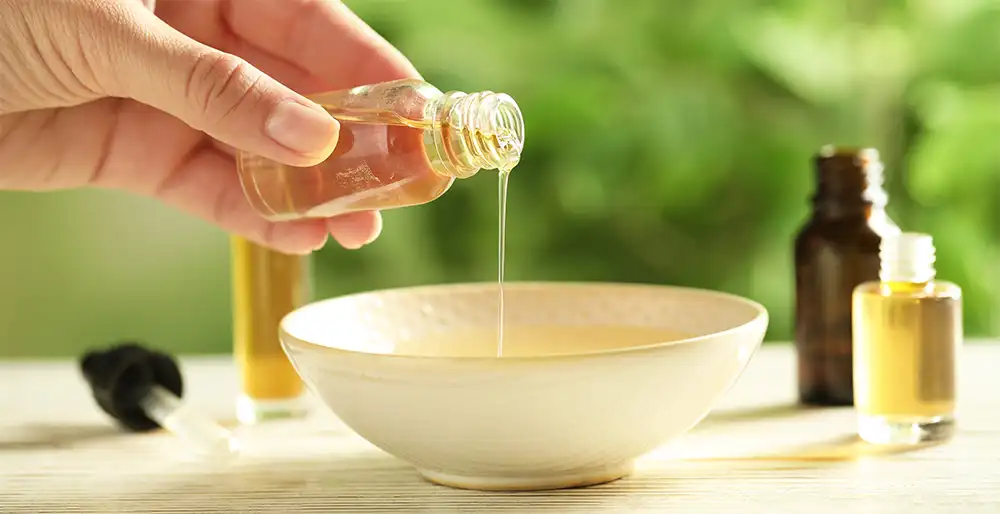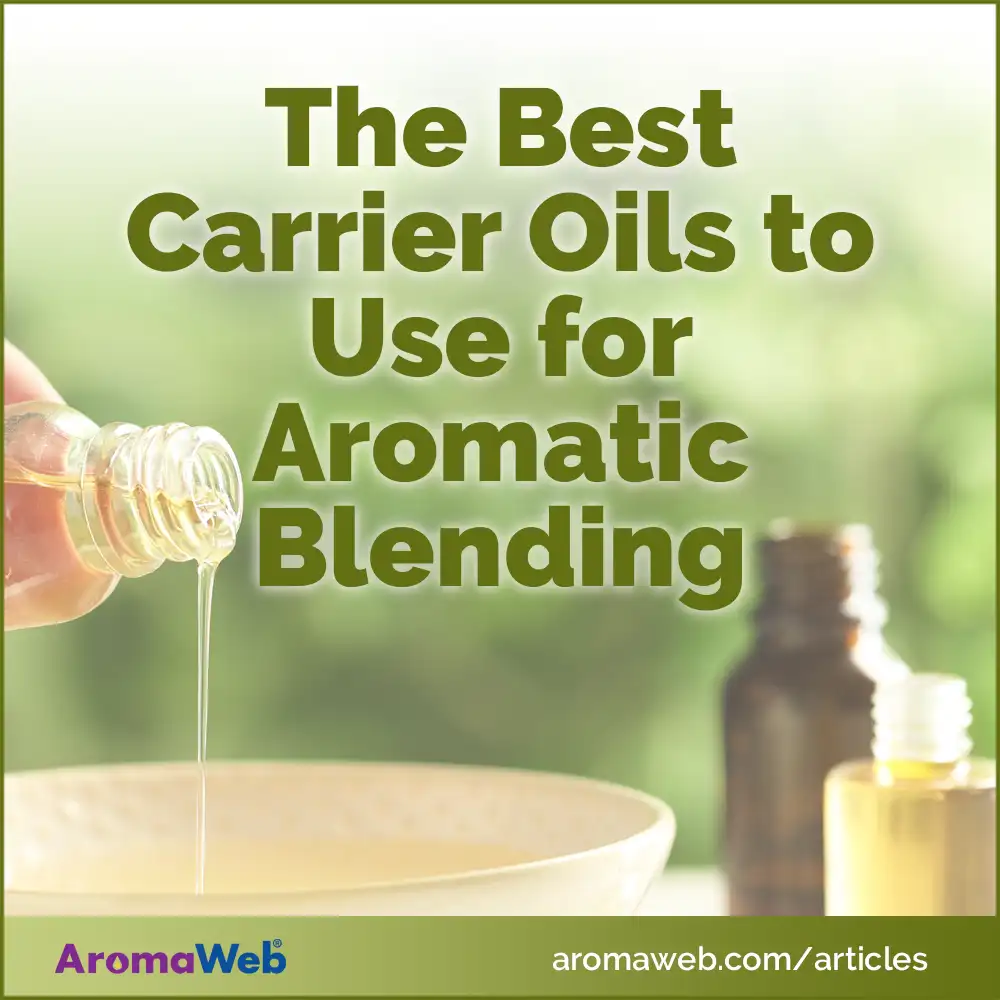The Best Carrier Oils to Use for Aromatic Blending

Carrier oils are fatty oils such as Sweet Almond Oil, Jojoba Oil and Fractionated Coconut Oil.
Within the scope of aromatherapy and natural perfumer and skin care applications, carrier oils are used to dilute essential oils so that they can be safely applied to the skin.
Carrier oils offer their own range of therapeutic benefits to the skin. The fatty acids present in carrier oils can help to nourish the skin, soothe irritation and minimize the appearance of wrinkles.
Some carrier oils are more nourishing and protective of the skin than others. Some carrier oils contain essential fatty acids that help to support healthy skin, but they can have a much shorter shelf life.
Carrier oils can differ in their benefits, color, thickness, absorbency into the skin, and some have very distinctive aromas and aren't as well suited for use in the preparation of formulations, blends and perfumes that you may want to smell their aromatic best.
Some carrier oils have shorter shelf lives than others because of how they are produced or because of the particular fatty acids that they contain. For example, polyunsaturated fatty acids that can oxidize more quickly than monounsaturated or saturated fatty acids.
Why You Should Consider the Aroma of the Carrier Oil for Particular Blends
For therapeutic blending where you're creating a blend with essential oils and one or more carrier oils, you may not need to worry too much about what your finished product smells like.
If you are creating a formulation to help sooth a skin irritation on your foot, for example, you may barely smell the aroma after you've applied your blend. Therefore, the aroma of the isn't going to matter as much.
On the other hand, imagine a scenario where you need to create a topical blend that you will smell frequently at times when you are feeling stressed or are rather anxiety. Including a carrier oil that has an aroma that you don't like or that clashes with the aroma of the essential oils in your blend is not ideal. Even if you're creating the blend to help soothe a skin irritation or ease pain, the finished aroma of the blend can potentially be repulsive to you if you're able to consistently smell the blend after application and you strongly dislike the aroma.
When you are creating an essential oil blend, recipe or formulation, therefore, it is important to consider the aroma of the carrier oil that you choose to use.
If you are striving to create a beautiful essential oil perfume that also is intended to help ease anxiety, it's unlikely that you would want to use a carrier oil with a distinctive or strong aroma that could clash with the aroma of your essential oils.
Additionally, if you are working with more expensive essential oils, you will want your finished blend to have as long of a shelf life as possible unless you are creating a small amount that you expect to finish within a very short period.
A Carrier Oil Blending Example
A few years ago, I had an aggressive form of basal cell carcinoma on my nose. I had Mohs surgery that resulted in deep incisions and numerous tiny stitches on my nose.
During this same period, I was mourning the unexpected death of two dear friends that died on the morning that I had the biopsy done.
Given the circumstances, I wanted to create a primary blend that would support the healing of the surgical wound and minimize scarring. Because I would be applying the blend directly to the top and side of my nose, I also wanted the blend to have a very soothing, comforting aroma. Frankincense and Roman Chamomile were key essential oils in the blend (there were others as well), and I used Jojoba as a stable carrier oil.
However, I also wanted to take advantage of the benefits of Tamanu Oil during the healing process. Tamanu Oil smells something like butter pecan ice cream. The smell is ok on its own, but the aroma clashes with the aroma of the anti-inflammatory and wound healing essential oils in my primary blend.
What I decided to do was alternate between applications of my primary blend and application of pure Tamanu Oil.
Important Points to Keep in Mind When Choosing a Carrier Oil for Use in Blending
- The purpose of the topical blend that you are planning to formulate
- The location of your body that it will be applied to
- How easily and frequently you'll be able to smell the finished blend
- Your aromatic preferences
- The shelf life of the carrier oil(s) you are considering
List of the Best Carrier Oils for Use in Aromatic Blending
The following carrier oils do not have strong aromas and typically have stable shelf lives of at least a year when purchased fresh. They are not the most beneficial carrier oils available, but they are great all-purpose carrier oils.
- Almond Oil, Sweet
- Apricot Kernel Oil
- Fractionated Coconut Oil*
- Jojoba Oil
- Meadowfoam Oil
- Watermelon Seed Oil
* Virgin Coconut Oil is a beautiful and much thicker oil, but it smells strongly of coconut. Fractionated Coconut Oil is virtually odor free and is much thinner in consistency.
Carrier Oil References and Book Recommendations
Jade Shutes & Sherilyn Siegmund-Roach, The Carrier Oil Palette: Fixed Oils, Butters, Herbal Oils, and CO2 Extracts of the Carrier Oil Palette (Chapel Hill, NC: The School for Aromatic Studies, 2022).
Jan Kusmirek, Liquid Sunshine (Somerset England: Floramicus, 2002).
Susan M. Parker, Power of the Seed (Port Townsend, WA: Process, 2014).
Carrier Oil Profiles
Go to AromaWeb's Guide to Carrier Oils to view profiles and properties for 24 carrier oils used in aromatherapy and skin/hair care.
Carrier Oil Suppliers
AromaWeb's Aromatherapy Business Directory provides a helpful listing of suppliers of Carrier Oils and other aromatherapy products.
Aromatherapy Blending Guide:
- Part 1: Introduction to Blending Essential Oils
- Part 2: Aromatic Blending of Essential Oils
- Part 3: Formulating Masculine/Earthy Aromatherapy Blends
- Part 4: Therapeutic Blending of Essential Oils
- Part 5: Working With and Blending Thick Aromatic Oils
- Part 6: How to Substitute Essential Oils in Aromatherapy Recipes and Blends
- Part 7: Safely Diluted Essential Oil Blends May Seem Weak At First
See Also:
